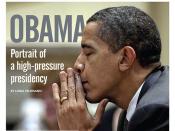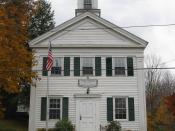Susan Smith The story of Susan V. Smith captured the attention of the whole nation in the fall of 1994. Susan Smith reported that an unidentified black man had hijacked her car and had kidnapped her sons, Michael and Alex. Smith said that she begged with the suspect to release her children but his reply was "No, I don't have time for that, but I won't hurt your children (LeBlanc)." After these events occurred Mrs. Smith reported the alleged hijacking and kidnapping to the police. The police then promptly began a nationwide search. Susan and David Smith appeared on television to appeal to the alleged suspect for the return of their children. "Me and my wife plea to you, please return our children to us. (Bragg)." After many days of fruitless searches for Michael and Alex Smith, Susan Smith confessed to killing her children. The story of the hijacking was nothing but a cover up for the terrible crime she had committed.
She confessed to driving her car into a lake, with both of her sons strapped in, and watching them drown. Mrs. Smith had turned from a loving mother into a vicious killer.
This tragic story was widely covered in newspapers across the country. Many reporters and camera crews came from as far away as Japan to cover the Susan Smith saga (Spaid). Among them were the New York Times, The State (Columbia, S.C.), The Christian Science Monitor, and the Wall Street Journal. Each newspaper had their own journalistic style, which was evident in the stories carried by the paper. This paper will include articles from The Christian Science Monitor, New York Times, and Wall Street Journal. Each article will be compared and contrasted with the focus being on the beginning of the story.
All three articles accurately recount the course of events that put the small town of Union, S.C. in the spotlight. They all include statements from family members, friends, citizens, and law officials close to the investigation. Rick Bragg's article for the New York Times is more personal than any of the other articles. His article not only related the facts, but also expressed the feelings and emotions of the people involved with the case. For example, the quote by Sheriff Howard Wells portrays the confusion and frustration of law enforcement as they dealt with the investigation. Wells said, " Very rarely do you have a crime without a crime scene to work with. I've been in law enforcement for twenty years and I've never had a case where there is so little to work on" (A8).
Mrs. Smith's cousin expressed his disbelief that such a horrible act could occur in a place like Union when he said, "This is a crazy thing. It doesn't happen here. People sleep with their doors open" (Bragg).
Bragg's article also reflects caring and concern for the alleged carjacker by a neighbor. Sue Morris was quoted as saying, "I pray for God to touch his heart and make him let those children go" (A8).
Bragg approached the story not just from the factual point of view. All of the statements included by Bragg give the article a sense of compassion and caring for all of the individuals involved.
The other two articles by Clif LeBlanc, from the State, and Elizabeth Levitan Spaid, from the Christian Science Monitor seemed to be written from just a factual perspective. The articles were factual but dull. These articles did not have the emotional appeal of Bragg's. They provided no vivid details or as many personal statements as did Bragg's article.
In conclusion, all three articles successfully related the facts surrounding the beginning of the Susan V. Smith story. Bragg related his story with vivid details, personal statements and with feeling and compassion. LeBlanc and Spaid also related the facts but the way they went about it was rather dull. Their stories were almost boring because they presented the facts with no feeling or emotion. All three articles were well written, but I feel Bragg's was the best.





